The story of
Hexagram
🇷🇴 🇮🇱 🇷🇴
Our ancestors were
contemporaries 🐃
of the 🐃 mammoths
Here is another proof of our continuous existence in the Carpathian lands discovered in the 1970s by archaeologist Nicolae Chetraru from Basarabia, who had thoroughly searched the palaeolithic grotto of Brînzeni, on the Racovăț Rivulet (Basarabia), a few kilometres from its merging with the Prut River, flowing from its left, not far from Mițoc (a locality in the Botoșani County), situated on the right riverbank. It was here that several strangely shaped objects made of mammoth bones with incisions on them, were discovered.
One of them represents a triangle with one of its lines a little chipped, and out of its rounded top a column or a pillar emerges. Below the pillar on the upper part of the triangle one can see three rows of incisions. And the object is also an amazing telling story for the heads of the Mioritics: our ancestors were contemporaries of the mammoths. The age of this archaeological object, which was determined by radiocarbon-dating it, is around 35000 B.C. in the Paleolithic.
From the beginning of time…
Objects similarly old and with similar symbols on them were discovered all over the area inhabited by the ancient Carpathian people, and I exemplify here with the paleolithic sites at Mțoc, Tibrinu, Coşăuti, and Cuina Turcului. The fact that these long forgotten natives from the beginning of time were considered some kind of savages, can be exemplified by any history book dealing with this period, which stopped at cave man clubs and roars of wild animals. But these objects through their encoded messages related to our people’s culture and other archeological discoveries or to information from elsewhere, and to other sources, help us discover some more facts about our own history.
The spirits of Heavens
the Axis of Heaven ⭐ Axis Mundi
To proceed to understand what we should understand about these artefacts, even if it is against those who have determined there is nothing to comprehend about these objects, that reveal forgotten or hidden stories to decrepit minds.
Let us start with the very beginning, long, long ago, when mountains would get together and talk to each other. At that time, about 37000 years ago, the people who were living here in our lands, stretching from the Pannonia Plain to the Russian Plain, were not wandering around like asses, instead they were communicating with one another, and because they were not too many, they needed to help one another, to be able to survive in times of trouble. And when it was time to rest they would reflect how to live their lives to please the spirits of heavens, and it was then that they would let their thoughts to roam freely through unknown and unimaginable realms, they would praise the Creator and its creation, conceived out of His love and thought. This is how the strange object found at Brȃnzeni was created. In fact it praises the Creator and its creations, representing the Ceahlău Mountain and the Axis of Heaven, the Cosmic Pillar, Axis Mundi, the Beam of Light or the Tree of Life and Death, that connects by light of the light, the Heavenly Father to Mother Earth.
When the world 💙💛❤
was created… DOCHIA
Dimitrie Cantemir in his “Descriptio Moldavie“ (1721) left us testimony that on the holy Ceahlău Mountain, there was a huge statue, 11 meters tall, a representation of Dochia; this monument of nature still exists today below the top of the mountain, just as described by our voivode.
A Mioritic legend also mentions this symbol of Dochia and says: “Dochia was very beautiful, which was also a bad thing; after transgrestsing, she remained holy. Water springs out of her body. Soldiers laughingly say: ‘this is the kind of water we drink!’… Dochia, long, long ago, when the world was created – they say that on her birthday it was warm, and she defied God by saying that she wasn’t afraid of Marƫ (March), and she would leave to tame goats (that is to gather them for the sheepfold) and get them ready for pasture.
But Marƫ sent rain and snow again, and she walked and walked for twelve days until she took off all her lambskin coats – laying them on “ciritei” (spirea bushes) – and when she got up there, it was cold and Mart sent frost that night… Dochia is the first day of spring. On Dochia’s Day a mărƫisor is being made out of a red silk or wool thread, entwined with another white one, then it is worn around the neck, so that the one (the woman) who wears it, could have rosy cheeks and white complexion all year long. The mărtisor is supposed to be worn until St. George’s Day, then it should be placed on a rose, or on a branch of cherry blossoms…
On March 1st a priest is called, and brought to the garden to bless the ‘toaia’ (wolfs bane in English) – a plant, whose root and leaves were used as folk remedies”. Goats as totemic animals to the Carpathian people, appear for the first time on the Tărtăria Tablets around 5500 B.C., and this might be the reason goats are mentioned, and only later they were replaced by sheep, as we can find in other versions of the legend of the “mysterious” woman. If we followed the thread of our ancestral language to understand the meaning of the word Dochia we get “do/du” (pitcher, joy, to give birth, to be born, to create, mound, hillock, height,sanctuary) + “gia/kia” (land, face, place, side, chosen, noble), therefore to our understanding it would mean sanctuary chosen by the Creator, the Land of Joy, height of land, holy mound (also found in the Egyptian culture), and others.
The pyramid of
LIGHT 🔺 Toaca
Merge with the Infinite
In each year, only in the morning of August 6, a strange phenomenon occurs on the Toaca Peak of the Ceahlǎu Massif, through the super position of some shadow and light that creates a shadow pyramid, or a pyramid of light.
This phenomenon was known to the people of the Paleolithic, inhabitants of our lands between the Dnieper River and the place of origin of the Danube River, because they conceptualized their thoughts in the little object (seen the 3rd image of the 1st row). Several places these people had inhabited were also discovered a long the Bistriƫa River Valley. The little object also embodies the Celestial Pole or the Pole of Light, which emerges from the Holy Mountain symbolized by the isosceles triangle, and it ascends to Heavens to merge with the infinite.
Several myths that have been transmitted to us through our ancestral faith, talk about these theological concepts, but they are considered “tales” or “stories”. Next to the “Pyramid of Light” (seen in the 1st row), I put a photo of the Toaca Peak as it usually is, and next to it is the hieroglyphic symbol of Pitah / Ptah spirit in the Egyptian religion, and below is the same symbol, as the people who lived at Tărtăria inscribed it, around 5500 B.C.
The dark
primeval waters
In order to better understand the hieroglyph that represents the Holy Land, I am going to mention that in the mythology of this spirit of Egyptian religion, it is said that he created all things seen and unseen out of his boundless love for the Earth. This mound of earth appeared after the spirit launched a bolt of lightning into the dark primeval waters, and the tumultuous waves created a mound of earth that was floating in its midst. Then of out of his heart a beam of light sprung, reached the pyramid shaped mound of earth, and through the words he uttered, he called creation into being; and this is however lasting life appeared here, and those who were worthy to return to Ptah’s city of light. The myth can also be found in romanian folklore, or popular culture.
The origins of the
symbol of the human being
In the second row I put two of these mounds/triangles with their tops facing each other to show you the origins of the symbol of the human being, also discovered at Vinča, Vinča – Turdaş Culture (the image in ochre and the drawing in white to its right) that came from around early 7th millennium B.C. In this image we can also see the beam of light of the Heavenly Father, just like it is carved on the GETÆ’s place of worship known as the Saint Ana’s Hermitage in the Bucegi Mountains. Ana or Anu was the ancient name of the Heavenly Father that the Emes people brought to the land between the Tigre and the Euphrates, while in the land around the Carpathian Mountains this name was replaced in time by Gog, Senta, Santa, or Sȋntu as it appears written on the Lead Tablets. The symbols can also be found identically placed in the ancient worship place of Sinca Veche 4000 B.C. In the lower part of the image in ochre there are several letters that can be found, to a great extent in the alphabets used by our ancestors the Gets on the lead tablets discovered at Sinaia, located only a few dozen metres away from the hermitage of Saint Ana!
The symbol of the Toaca Peak in the Ceahlău Mountains was also used by the Emes people after leaving the Carpathian regions. They used it in building their famous temples shaped as terracestepped Pyramids they called “ziggurats” (“zig” means: “wall”, “to build”, “to ascend”, “to rise” +”gur” that means “sky”, “ to descend”, “to rule”, “connection” + “ad” which means “ancestor”.
The result is: “heavenly construction of our ancestor, the creator of all things seen and unseen”. Nevertheless experts say what they should never say, namely that these would have been sacrificial sacrificial altars taken over from the Akkadians that had invaded them (but this was a Semitic people, whom the Ivrit people claim as their ancestors)! The symbol of the Holy Mountain was brought from the Carpathian land to Egypt, too, with the migration of the Carpathian population in the second half of the 4th millennium B.C., and clear evidence of that are the images of pyramids from the last row.
the Titans
From left to right, I exemplify with the images of the Pyramid of Light, that is formed on August 6th on the Pion Mountain, also known as Peon or Ceahlǎu, the Toaca Peak, the highest point of the mountain, where the strange phenomenon takes place, the terrace pyramid of Sakkara (“Sakka” were the Scythians, the population living North of the Ister River + “ra” which means “bright”, “sun”), the first monumental construction of the Egyptians that had a funerary role. To its right there is an Emes ziggurat reconstructed, after some archaeological pieces that were found in the area between the Tigrisand the Euphrates. The fact that in Antiquity people knew something else about our Ceahlău Mountain they called Peon or Pion, one of the two sacred mountains of the Gets, I further exemplify with Strabo, the Cappadocian who wrote in his “Geography” (7, 40) : “As the paeanismos, or singing of the Thracian Paean, was called ‘titanusmus’ by the Greeks, in imitation of a well-known note in the paean, so the Pelagones were called Titanes”.(English translation, George Bell & Sons, 1903, London). Therefore the Pean of the Thracians is called by the Greeks the Hymn of the Titans. There you have it!
the Hyperboreans
🇷🇴 the Pillar of Heaven 🇷🇴
The same writing contains further information: the Thracians and the Gets are one and the same people, but they only live in different lands. The song that was taken by the Greeks from the “Thracians” was an hymn sung to honor a deity, usually Apollo the Hyperborean, namely the one who came from the Northern parts of the Ister, and once his cult landed in the sunny and blessed Ellada, the land of liars, so did the religious songs. In Koine (which was the language spoken by the Greeks between 400 B.C. – 600 A.C., because later they spoke Neo-Greek) the words “peon” and “pion” meant “pillar” or “column”, which is exactly what the artefact discovered at Brȃnzeni has on it. In his poems, the Romanian writer G. Asachi (1788 -1869) calls The Ceahlӑu Mountain “Pion” , therefore these facts have led us to believe as true.
As for your truth, I feel that if I were to tackle it, the skies would fall down. In times immemorial this mountain was considered to be the Pillar of Heaven or the Axis of the World, which is exactly what tens of “fairy tales and stories” of the Mioritics tell us, and some ancient Latin sources, too. And it was also the Greeks who used to call the “nai” (panpipe) – instrument specific to the Ariminian shepherds – “Pan’s pipe” (“panpipe” inEnglish); panflutes were used to play the religious tune called “Pean”, which they loved so much.
The holiday celebrated on August 6th that Romanians call “Urcarea muntelui” (“Mountain Hike” orwalking up the mountain) today, is certainly over 3000 years old, because the Greek poet Pindar (518 – 438 B.C.) writes in his “Isthmy” about the Path to Gods, that lead to the meeting place of the Hyperboreans, and the same path was also mentioned by D. Cantemir as Cheile Bicului (the BicGorge). Pindar writes in “Lathinia” about this path: ”An innumerable lot of stone pillars cut into 100 cubits sitting tall in a row as monuments of some glorious deeds… neither by ship nor on foot could you find the marvellous road to the assembly of the Hyperboreans”.
Romanian Mythology
R. Vulcănescu in his book “Romanian Mythology” (published in 1987) writes on page 149 about the Ceahlău Mountain hike: ”once they got to the top, the pilgrims gathered in a circle around the pyres, where according to tradition they had to stay awake until sunrise, eating, joking, singing, and dancing the hora… as soon as the Sun rose, all of them would stand up facing the east raising their hands towards the Sun and they would kneel and thank Heaven. After contemplating for awhile, they would sit at the table enjoying the feast, and dancing the hora so loud that the mountain would quake… After the feast they had to walk down immediately, so that the sunset would not catch them coming down the ridge… According to custom, the mountain had to remain deserted by sunset. It is believed that the sunset had to catch the people in the village or in their homes, so that they would do well all year long”.
All these rituals were done to receive the blessings of the divine power for the entire community. These hiking the mountain customs are called “Nedei” in other parts of Romania, and they would take place on June 25, called the Day of the Sâzaiene, and on July 8, which was St. Peter and Paul’s Day, that is further proof, a linguistic one this time, that the word “Nedei” is from 4000 – 1000 B.C., and that it consists of “Ne” meaning “power”, ‘crowd”, “communion”, “respect”, “honor” + “Dia”, divinity to many nations, deity of the beginning of light /daylight. The Irish greet each other by saying “Dia Guici, and to the Romanians Dia was the Goddess of Light. In Banat, region in Western Romania, the Nedei are called “Ruga” (prayer).
Șinca Veche
🇷🇴 B.C. 5000 🇷🇴
the ancient worship site
צורת הייצוג הראשונה של מגן דוד 🇮🇱
The Incas also have a festival and a procession that lasts for 24 hours; the participants sing and dance along the way while “hiking the mountain” up to Kuzco, and part of the songs resemble our songs sung in the “goat dance”, the ”bear dance”, the “little horse dance”, and the “deer dance”. Up on the mountain top, where those who get there kneel and pray, there is a peak that looks very much like the triangular rock of the place of worship at Șinca Veche.
In his writing called Axiochos, Plato, the philosopher puts words into the mouth of Socrates (479-398 B.C.) that the Hyperborean virgins Opis and Hekaerge came from the land north of the Ister and brought to the temple of Delos some triangular tablets with religious writing on them, which talked about the immortality of the soul and the everlasting life in Heavens.
These triangular tablets with eschatological content, show the level of civilization in the northern parts of the Hister. The tablets were triangular in shape because they brought down the wisdom from the Heavenly Father symbolized by an isosceles or an equilateral triangle pointing up, and that of Mother Earth in the same shape, but pointing down, superposed, just like in the carvings of the ancient worship site at Șinca Veche bear witness to that. In the middle of the triangles there is a geometric figure that looks rounded but not as a full circle, with a sign that looks like a six, shaped on its left, and a double spiral sign on the right. The sign that looks like a six can be found in the Emes / Sumerian pictogram, but placed horizontally and its meaning is dead body of a human being, disappearance, death, non-existence, ancient, while the sign on the right is the sign of Heavenly Creation that takes place harmoniously, starting with the light of the Creator Father towards the material world of the Earthly Mother.
the Eternal Creation
The written symbol of our ancestral place of worship shaped as a double letter S, with its ends twisted and turned in wards, symbolizes the beginning and the end, that is also found in the beginning. The result is the two fish, and the Chinese also got it from our ancestors, when Emperor Mu visited our land around 1000 B.C., and called the pretty little Ariminian thing Yin and Yang in his language. The symbol refers to the fusion of Heavenly Father’s light and Mother Earth which creates an emergence of the perpetual life of Mankind and Nature that took place in the month of March, or Pisces in our ancestors’ calendar. The rhythm of Eternal Creation is permeated bypolarized energies: evolution or expansion originating in the centre, running outwards, bringing outwith it light from the light of the Eternal Illuminator, and involution or contraction, which represents regression to the centre, death or liberation from matter.
In other words, as we could put it in plain Romanian, handed down to us by our forefathers, the double spiral means movement from the death of the body and its return to the matter of Mother Earth, to re-birth in the Heavenly Light, alongside our ancestors the Asene people and other noble souls of the Chosen People or the People Descending from the Gods, and the renewal through birth of the Geti-Begeti (True Getae, or Geti-be-Geti) who are to defend and honor the Holy Land, our Dio Getia. It remained in our ancestral Ariminic religion, as the symbol of the travel to the realm beyond, materialized in our lands in the Romanian custom of putting besides the head of the deceased, a simple spiral-shaped candle to burnout completely. This is called “toiag” (cudgel), “toieguț” (little cudgel), ”statu”, “privighetoarea” (wake), or light.
The Origin of
the “Star of David”
All these names show the help, the support, the wake and the lightening of the deceased one’s way leading to the City of Light of our ancestors’ souls. As the dead man’s sign, or the “figure six” appears in the pictographic writing of the Emes people, who in 3200-3000 B.C. started using the cuneiform writing, therefore that this sign was used in the Carpathian culture in mid 4thcentury B.C., so the conclusion should be used to prove that the place of worship at Șinca Veche is ancient, otherwise its existence in the Carpathian area could not be justified.
The GETÆ “Torn out Eye”
The second wave of migration of the Emes people left the Carpathian land for Ki-En-Gy(r) / Sumer around mid 4000 B.C.There is another very interesting proof found inside the ancient worship place… the construction is made up of a larger rectangular room and a smaller circular one with a dome above, where religious rituals were performed, and small offerings were made on a small altar. In between these two rooms there is a window, and it is shaped as an eye, symbol which appears on the helmets of the GETÆ, that were discovered at Cotofanesti and Argighiol, but they also appear in the Egyptian mythology where the symbol is called the “Torn out Eye” symbolizing the oil blessed by the Creator, which gave the anointed one miraculous powers against the forces of darkness.
The wall that separated the two rooms vanished in the meantime, and we can guess that if it had been in place, it would have told us the true story of its ancient past, and their lies would not have twisted the truth! The ultimatetruth: the six-pointed star which was used in the writing discovered at Șinca Veche between 7000 -5000 B.C.
the Eternity
The Șinca Veche symbol from the early 4000 B.C. It appears a thousand years earlier at Lepenski Vir (village on the right bank of the Danube at “ Cazane”). Emes place of worship that looks like the one in our part of the world. The ceramics discovered at Cucuteni (4000 B.C.), where one could see the same symbols from Șinca Veche repetitively, and Easter eggs painted with the same symbolism by Romanians in the 21stcentury. The first image bellow is from Lepenski Vir, in eastern Serbia at Porţile de Fier Gorge, on the Danube River, where an ancient settlement dated around 7000 BCE was discovered. It consists of a main village, surrounded by ten smaller villages that flourished between 5300 – 4800 B.C.
Numerous sculptures of “fish-men”, and the housing architecture, as well as the objects of worship reveal a society, whose social and religious culture were well-defined, in the context of that time period. We can see that Dagon of the Palestinians also wears as headpiece a fish skin head attached to the god’s head, just like the priests of the Gets used to wear their woolf skin, placed on their head. In my opinion these totems are only the result of an evolution of religious concepts in the Carpathians, which were brought both to Ki-En-Gir and to Palestine where they adjusted to their new homelands,and to their new religious taste.
The second picture shows the Eternity that the Gats depicted on the Lead Tablets discovered at Sinaia, through which the soul of the worthy one, whose good deeds would have made it worthy to go through into eternity, and in between the pillars there is a human being standing, its lower part of the body is a fish, but the thorax and the head are those of a man, covered by a mantle. In the 4thmillennium BCE the Carpathian people, who migrated to Ki.En.Gir had in their mythology a similar fabulous creature whom they called Oannes which had brought their entire knowledge and all the skills, after emerging from the waters several times in order to help them.
Above its human head this entity had a fish head, and they also had Ea, the spirit who was the protector of clear waters, the onewho performed religious cleansing, and whose totem was the serpent alongside the fish. This spirit was also known as Karubu, meaning “patronizing deity”. In time the last two letters were reversed through metathesis and it became caburu in Irish, or cabiru in Greek and Roman writings. In fact the fish also appears in mosaics with Mithraic themes, which the Mosaic Ivrits used to call Pisces Dacim, and this is how some things were mentioned about the Gets in Antiquity.
before the
Great Flood
The oldest graphic representation of the fish in the Carpathian area is in the place of worship of Șinca Veche 5000-4000 B.C., where they are chiseled within the six-pointed star, and it was fish that the early Judeo-Christians also put on their tomb stones. A legend from our land tells about the Dolf, Dulf, or the Spirit of the Sea, a being that lives only in the Black Sea, and who surfaces sometimes as a human being, and sometimes as a fish.
In the Romanian carols about the Spirit of the Sea they say that there were nine brothers and nine sisters who all died, shot by arrows, only the Dulf and his youngest sister survived. This might have been the very scene that the image at Sînicolau Mare, mid 3rd century AD represents the Dolf’s sister wearing a Getic cap on her head. In some religions the fish was considered a sacred being, and the one who dared eat it was cruelly punished.
Greek poets satirized the custom of the Arimaspians, and wrote that they have an eye on their forehead, but in fact the story refers to that headpiece which in Romanian folklore is called the clairvoyant or the healing stone that the ones chosen by the Creator were wearing on their head, as we can see on the heads of the great priests of the GETÆ, in the lead tablets or on the mural of Șinca Veche in which Anu, Gog, Senta or Sîntu were depicted. Other written sources tell us that the Arimaspi were wearing a headband or circle, not too wide and made of gold with a precious stone or a figurine of the same metal, hence the contempt with which Greek poets have satirized the tradition of the Arimaspi by saying that they had an eye on their forehead.
I also bring proof and exemplify with the Essene manuscript entitled “Communion with the Angel of Water”, which helps us understand how old some information on the lead tablets discovered at Sinaia is and which tells us: “The Holy Law of the Heavenly Father is like a river winding through the woods; all creatures are drinking from it. It isn’t for a few only, but it is for all.” And I shall continue with the manuscript entitled ‘The Sevenfold of Peace” :… Look for peace with all Sons of Men and let it be known from the Sons of Light, because we live according to the Holy Law since the time of Enoch or even before that… Long before the Great Flood, the Giants were walking the earth and giant trees, which today are only a legend were their roof and their kingdom.”
These writings also confirm that our ancestral religion, as seen in the Șinca Veche place of worship, has its roots even “before the Great Flood”, that was during the time of the “Great Ones”, the Giants or the Titans. Science also confirmed that the Flood took place in the Black Sea around 5500 B.C. And the quote above also proves to those who are in sound mind something incredible: Cato the Elder who says that the Gets “knew how to write long before the Latins, because they had received the alphabet from the Giants, are confirmed by the manuscript cited above, by the signs discovered in the cave at Gura Chindiei (15000 – 11000 B.C.), and also by our “folk tales” telling us about the Romanians who knew how to write since the time of the Giants, and about the entire wisdom they had received from them, (from the “Great Ones”) who had lived before the Great Flood that brought the waters from the Ocean to the Black Sea!
Mithraism
versus Arianism
In Northwestern Bulgaria a piece of metal was discovered (dated 4000 B.C.). It is shown in the first image above, and on it there is a symbol similar to the one of Şinca Veche, but in its middle it has a point like an indentation that could give a bulge or a bubble when punched, as you can also see on the Emes seal, the creation of the Galls. The Galls who were living in Dio Getia since the 5th century B.C., after some quarrels, punished by the swords of the Gets, got to Palestine in the year 271 B.C.; they settled there, and named their new homeland Galilee, as recorded in some Greek and Roman writings. Herod was Governor of Judea between 43 – 40 B.C., then he paid a large sum of money to Octavianus Augustus to get the right to lead in a kind of legal autonomy between 37 – 4 BCE, as “basileus” (written on coins) is a title that means leader, not king… At a schism, together with Hilel the Elder, he wanted to convert the Judaics to a religion falsely called Mithraism or Arianism – inspired by the religion of the cross practiced by the Gets and a large population of the Roman Empire – he took over a lot of the symbols of the religion of the Gets (the images above with the coins from roman empire prove just that).
In the first row there are some coins of Herod with the letters (IRODOI BASILEOS) where we cansee the symbols of our ancestral religion! On the right there is the cross with arms of equal length; in the middle we have the vivid fire from our ancestral religion that is burning in a Roman skylight and the key of Heavens to its left, and the cross with the wheel of life. Next to this image there is what looks like a table on which the Holy Mountain sits, and a pillar of light with a six-rayed star on top, and the mountain is sided by the Tree of Life and that of Death (made up of seven branches).
In the last image on the right there are the same religious symbols, but the star is made up of two overlapping triangles without their contour inside. In the second row below, there are two wooden molds discovered in Palestine (1st century of our era) with the Star of David on them; one has inside the flower of life found in the ruins of a synagogue in Samaria and the other one has a… swastika or cross! On the right there is a stone plaque found among the ruins of a religious worship place in Galilee (1st c. BCE – 2nd c.AD), on which we can see the Tree of Life and death, symbols of the Heavenly Father (a circle within a circle and a dot in the middle), just like those in the temple of Cancho Roano, Spain (8th B.C.), and next to it there is the Flower of Life inside a circle.
the Wooden Church
The image of the back door entrance to the wooden church at Budeşti Joseni, in Maramures county, built in the year 1643, in which one can see several symbols details of these amazing images regarding the continuity of the Romanian people, direct descendant of the people originating from the Gods in 7000-2000 B.C., down to the times of the mighty GETÆ to the Romanians today… at least 7528 years of continuity!
The two juxtaposed triangles, as we know them from Șinca Veche or on the wooden door of the church mentioned above, have in the middle the symbol of the Flower of Life, very powerfully stylized, and the symbol of the infinite, found both at Vinča and at Turdaş. The latter, also found in the alphabet of the Gets, is repeated six times in the detail under discussion. It symbolizes the eternal movement of space and time, as infinite structures of existence of early creation. All these symbols are inscribed inside a circle which together with the small circle in its middle forms the symbol of the Heavenly Father, as it appears so many times on the Lead Tablets discovered at Sinaia, in numerous archaeological sites and on the wooden gates of Maramureş, Romania.
Constantin Olariu Arimin
| 🇷🇴 reBranding ROMANIA 🇷🇴 CSR project by B2B Strategy ™ |
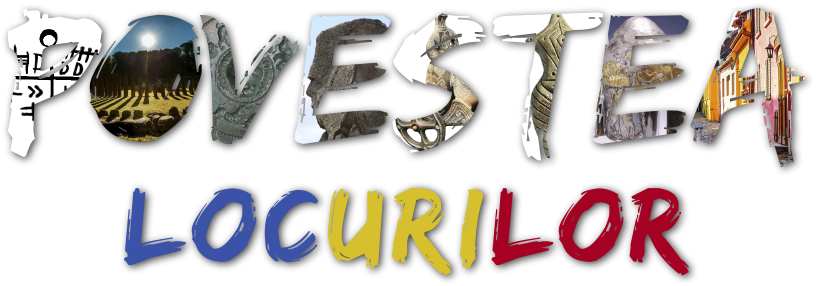


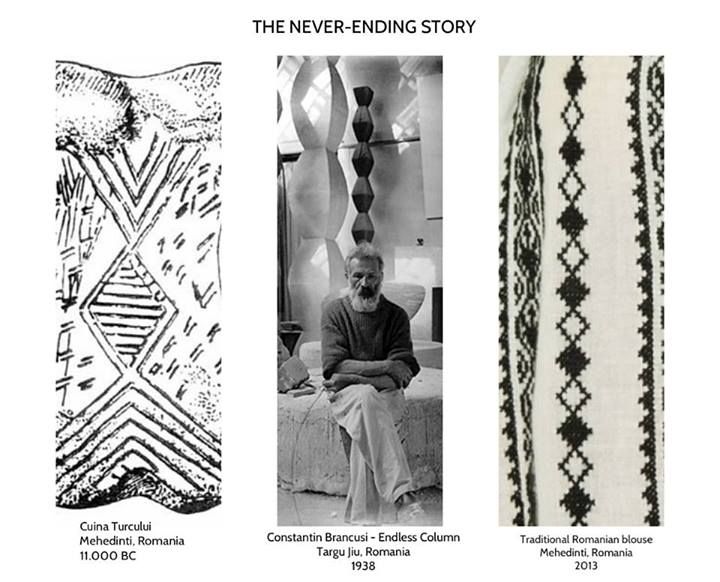
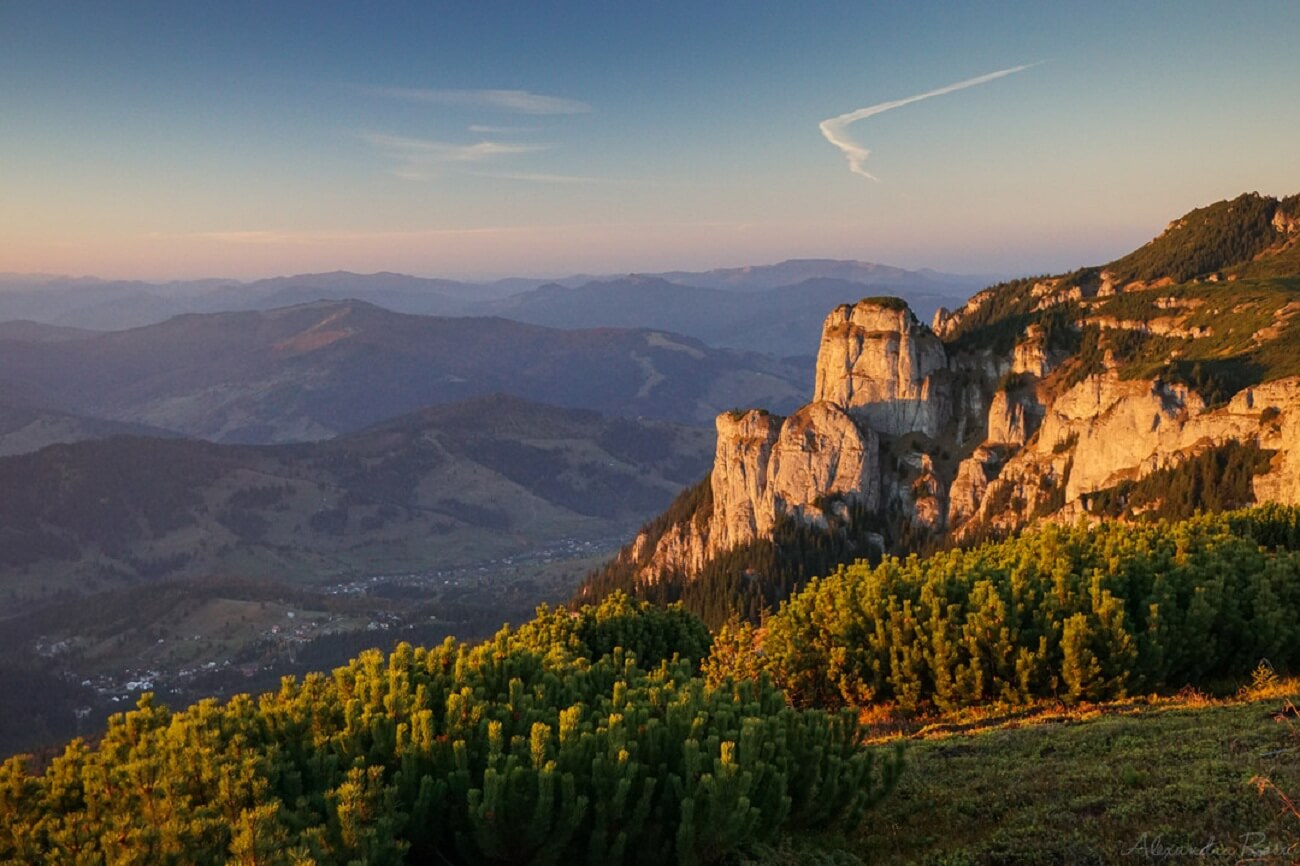
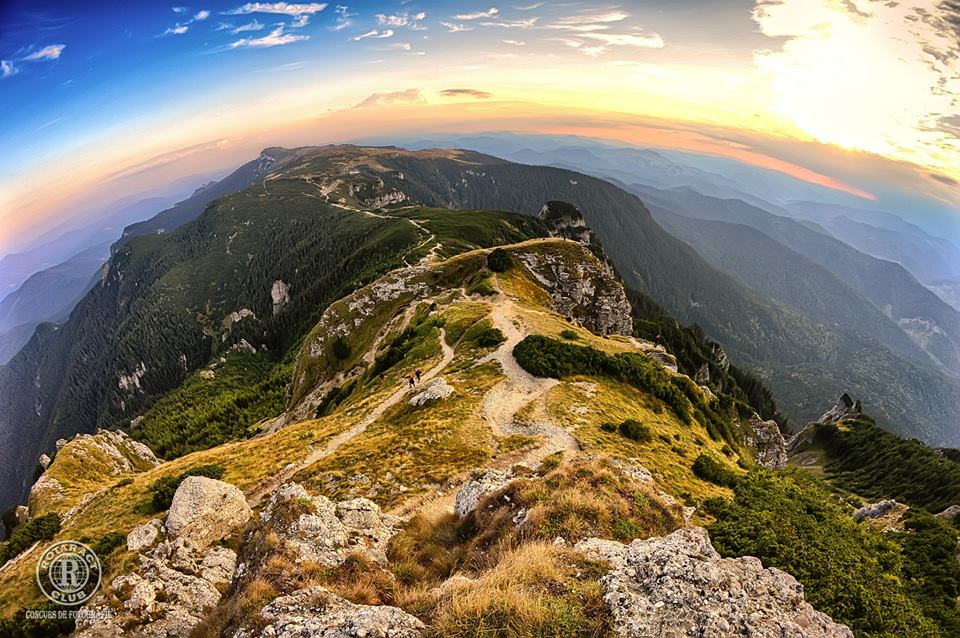
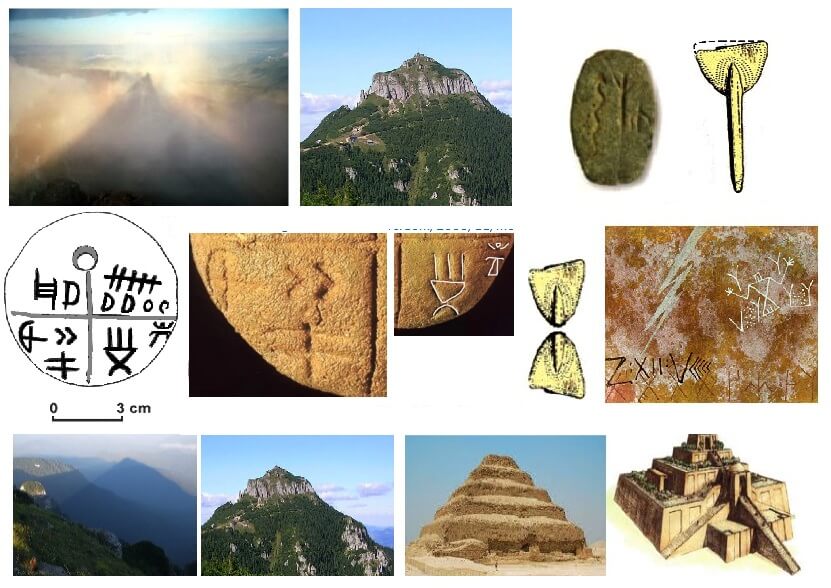
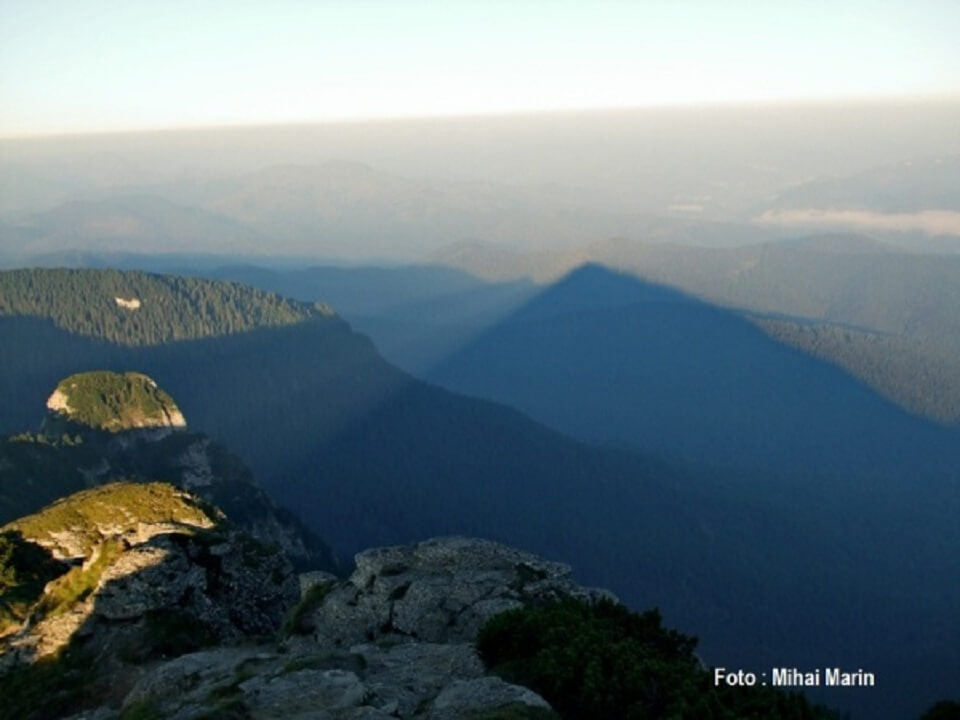

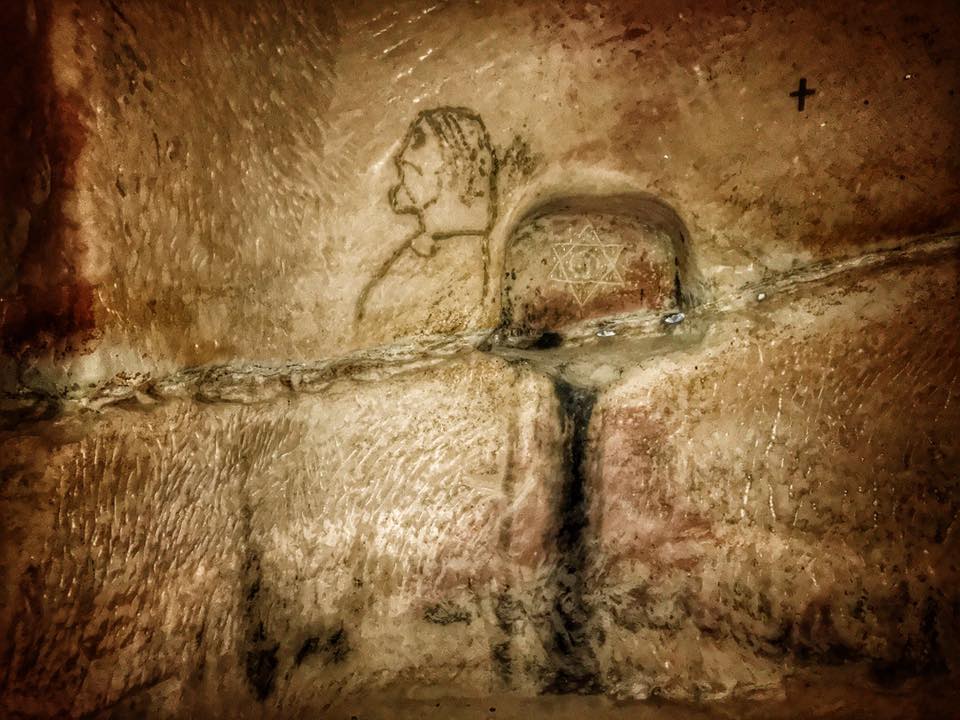
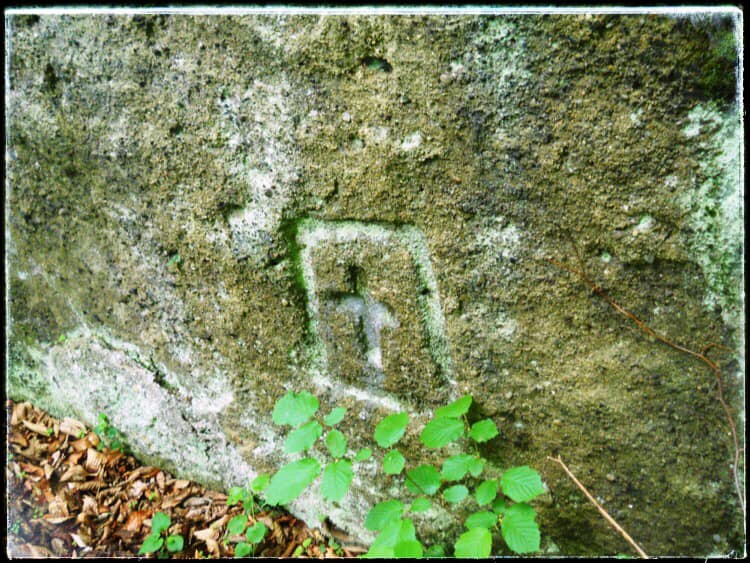
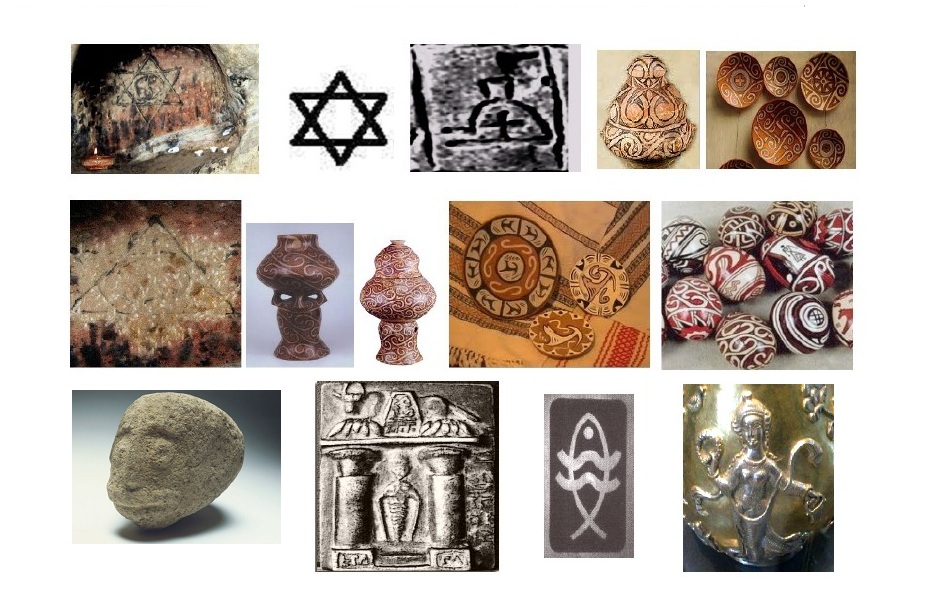

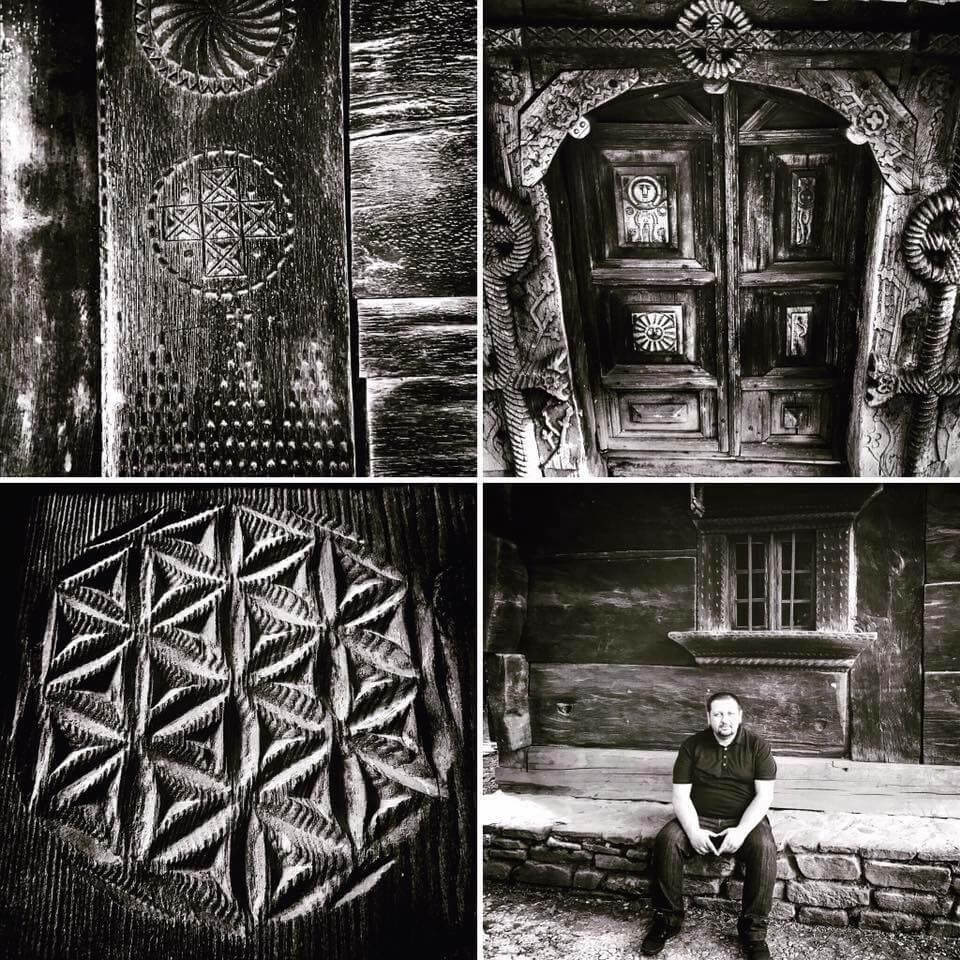
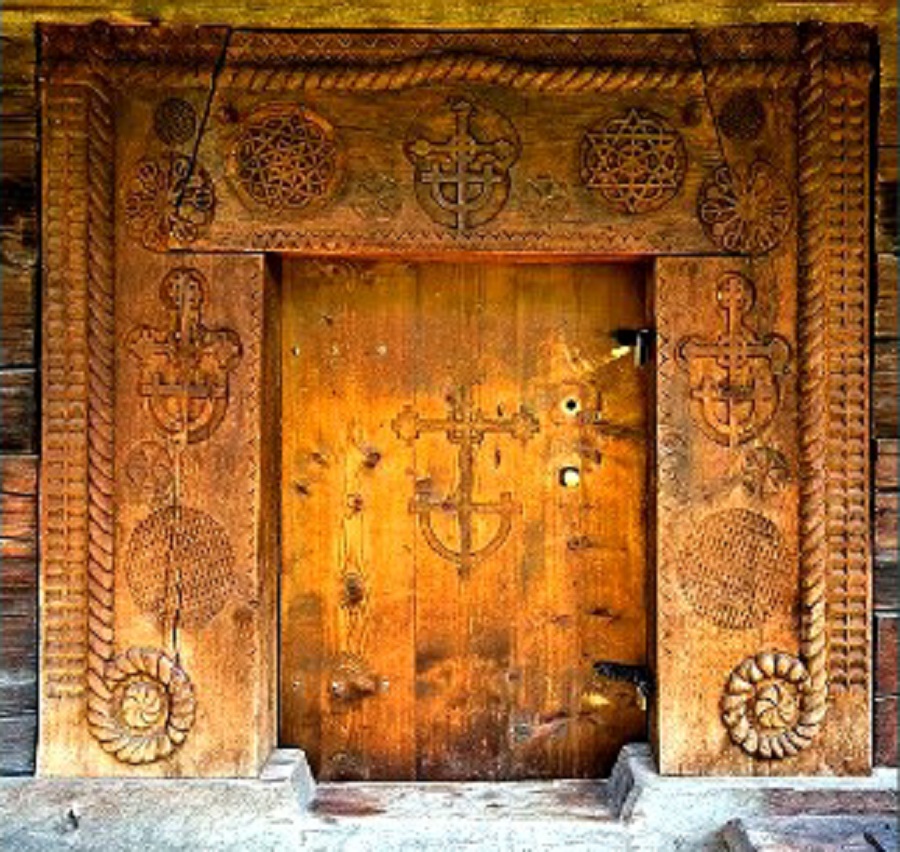
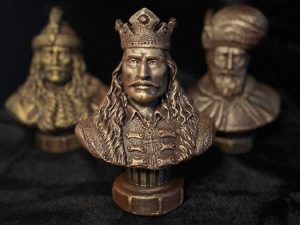
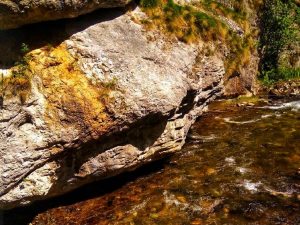

Comments are closed.